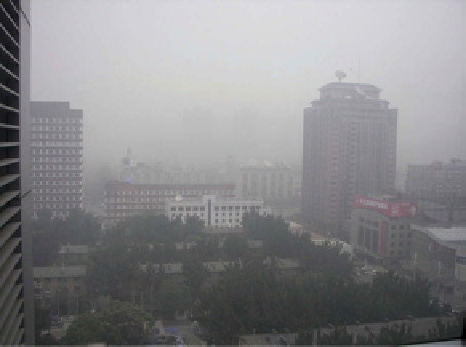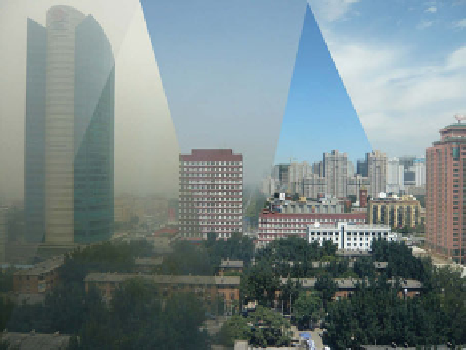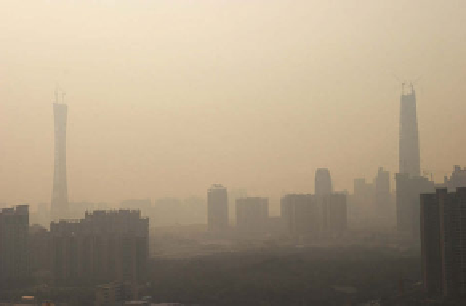Geoscience Reference
In-Depth Information
(a)
(b)
(d)
(c)
Figure 8.11.
(a) Smog in Beijing, China, August 2007. Photo by Andrew Chang. (b) Montage of pollution during
5consecutive days in Beijing, China during the city government's pollution control testing for the Olympics,
August 3-7, 2007. Photo by Andrew Chang and Kimberly Ong. (c) Pollution under a subsidence inversion layer,
as seen from the top of Mount Taishan, Shandong Province, China, November 2007. Photo by Andrew Chang.
(d) Air pollution in Guangzhou, China. Photo by HSC/Dreamstime.com.
world average. Living there is equivalent to smoking
three packs of cigarettes a day.
Overall, in China, about 750,000 people die each
year prematurely, 350,000 to 400,000 due to outdoor
pollution and the rest due to indoor pollution (McGre-
gor, 2007). However, China is not the only country
in Southeast Asia with poor air quality. Other coun-
tries, such as Taiwan (Figure 8.12a) and Thailand
(Figure 8.12b), suffer as well.
mine and smelter on Shikoku Island produced pollution
that damaged crops, enraging farmers. In 1925, a high
smokestack and desulfurization equipment reduced pol-
lution from the smelter. The implementation of a tall
stack at the Hitachi copper mine in 1905 similarly
reduced local complaints about pollution.
In the early 1900s, the expansion of industry
increased urban emissions in Japan. In the 1910s, pol-
lution in Osaka, a city developed around coal com-
bustion, was as severe as that in other industrial cities
of the world (McNeill, 2000). In 1932, Osaka passed
alaw requiring industry to increase combustion effi-
ciency and reduce smoke emissions. Instead, the lack
of inspectors and an increase in the number of chemical
8.2.11. Japan
Some early pollution in Japan was due to mining. From
the seventeenth century to 1925, the Besshi copper





Search WWH ::

Custom Search